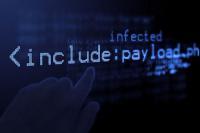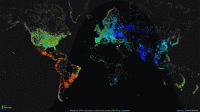-
What CSPs can learn from the latest DDoS attacks
Around the world, communications service providers (CSPs) and subscribers were affected by the 21 October 2016 DDoS attack, making it virtually impossible to reach many popular Web sites for several hours. Although CSPs weren’t targeted directly, they were still affected since the outages drove additional caching DNS traffic caused by the errors from failed DNS requests. This spike in traffic slowed overall network performance, likely driving up customer support call volumes from unhappy subscribers. The attacks highlighted the easily overlooked — yet vital — role that DNS plays on the Internet. An expert offers a few key steps CSPs can take to prepare for similar attacks in the future.
-
-
Cyber incidents’ cost not large compared with other business losses
The cost of a typical cyber breach to an American company is much less than generally estimated, providing one possible explanation for why companies do not invest more to improve computer security, according to a new study. Researchers found that the typical cost of a breach was about $200,000 and that most cyber events cost companies less than 0.4 percent of their annual revenues. The $200,000 cost was roughly equivalent to a typical company’s annual information security budget. Given that finding, the study’s author says that businesses “lack a strong incentive to increase their investment in data security and privacy protection.”
-
-
“Great British Firewall”: U.K. plans firewall to protect industries, consumers
The GCHQ, U.K.’s surveillance agency, said it was planning to build a British firewall to offer protection against malicious hackers. GCHQ has developed cybersecurity systems the aim of which is to protect government sites and critical infrastructure, but the agency is now ready to offer its expertise to major private companies. “It’s possible to filter unwanted content or spam. It’s possible to filter offensive content. It’s technically possible to block malicious content,” GCHQ director said. “So, the question is: why aren’t we, the cybersecurity community, using this more widely? Well, we — in the U.K.— now are.”
-
-
It’s easier to defend against ransomware than you might think

Ransomware – malicious software that sneaks onto your computer, encrypts your data so you can’t access it and demands payment for unlocking the information – has become an emerging cyberthreat. Several reports in the past few years document the diversity of ransomware attacks and their increasingly sophisticated methods. Unfortunately, the use of advanced cryptosystems in modern ransomware families has made recovering victims’ files almost impossible without paying the ransom. However, it is easier to defend against ransomware than to fight off other types of cyberthreats, such as hackers gaining unauthorized entry to company data and stealing secret information.
-
-
What Machiavelli can teach us about cybercrime and e-commerce security

Online poker offers new insights into the mind-set of scheming Machiavellians, researchers have found. The researchers show that the card betting game can be used as a novel way to better understand the psychology of strategic deception. The research is part of a broader project looking at break-through research on deception, a basic problem at the heart of cybercrime affecting sectors such as e-commerce and financial services, to deepen our fundamental understanding of how deception works particularly in online settings.
-
-
Cybersecurity’s weakest link: humans
There is a common thread that connects many of the recent hacks which captured the headlines. They all employed generic – or what is now considered “old school” – phishing attacks which typically took the form of the infamous “Nigerian prince” type e-mails, trying to trick recipients into responding with some personal financial information. “Spearphishing” attacks are similar but far more vicious. They seek to persuade victims to click on a hyperlink or an attachment that usually deploys software (called “malware”) allowing attackers access to the user’s computer or even to an entire corporate network. Yes, people are the weakest links in cybersecurity. But they don’t have to be. With smarter, individualized training, we could convert many of these weak links into strong detectors – and in doing so, significantly strengthen cybersecurity.
-
-
System predicts 85 percent of cyber-attacks using input from human experts

Today’s security systems usually fall into one of two categories: human or machine. So-called “analyst-driven solutions” rely on rules created by living experts and therefore miss any attacks that do not match the rules. Meanwhile, today’s machine-learning approaches rely on “anomaly detection,” which tends to trigger false positives that both create distrust of the system and end up having to be investigated by humans, anyway. But what if there were a solution that could merge those two worlds? What would it look like? Virtual artificial intelligence analyst developed by the MIT’s Computer Science and Artificial Intelligence Lab and machine-learning startup PatternEx reduces false positives by factor of 5.
-
-
Sharing password data safely to bolster cybersecurity
An unfortunate reality for cybersecurity researchers is that real-world data for their research too often comes via a security breach. Now computer scientists have devised a way to let organizations share statistics about their users’ passwords without putting those same customers at risk of being hacked.
-
-
Cybercrime’s true toll

Cyber thieves who steal credit and debit card numbers are making millions of dollars in profits, fueling a global criminal enterprise marked by the high-profile data breaches of major companies such as Target and Home Depot. A criminologist offers one of the first scientific studies to estimate cybercrime profits, saying the findings should be a wakeup call for consumers and law enforcement officials alike.
-
-
Hyperion cyber security technology receives commercialization award
The commercial licensing of a cybersecurity technology developed at the Department of Energy’s Oak Ridge National Laboratory has been recognized by the Federal Laboratory Consortium for Technology Transfer (FLC) as a good example of moving technology to the marketplace. Hyperion, which has the capability automatically to analyze executable programs and recognize behaviors that signal malicious intent and vulnerabilities, was licensed to Virginia-based R&K Cyber Solutions, LLC, in late 2014.
-
-
Researchers use advanced algorithms to identify six botnets

Ben-Gurion University of the Negev (BGU) cyber security researchers have discovered and traced approximately six “botnets” by analyzing data collected from past cyberattacks. Botnets are networks of malicious, remotely updatable code that covertly lurk on infected computers.
-
-
Intel unveils new security-on-a-chip system
Intel on Tuesday unveiled a new password security-on-a-chip system called Intel Authenticate. The new security system aims to thwart hackers who use fake e-mails to trick employees into revealing sensitive information like user names and passwords. Intel said that putting the authentication process on a chip makes the PC itself part of the security system.
-
-
Optical illusions which fool computer vision raise security concerns

Computers are learning to recognize objects with near-human ability. But researchers have found that computers, like humans, can be fooled by optical illusions, which raises security concerns and opens new avenues for research in computer vision
-
-
Iranian hackers attacked New York dam

In 2013, Iranian government hackers infiltrated the control system of Bowman Avenue Dam in Rye, New York, located twenty-five miles from New York City. Using a cellular modem, the hackers could have released larger volumes of upstream water without warning. As dams go, the Rye dam is small at about 20ft tall. There was some confusion initially, as DHS and DOE thought a similarly named dam in Oregon — the Arthur R. Bowman Dam – was the one hacked. The Oregon dam, at 245 feet, is much bigger, and hacking its control systems could have had much more serious consequences.
-
-
Following indictments, China’s military reduces its commercial cybeespionage against American companies

The People’s Liberation Army (PLA) has reduced its cyberespionage activity targeting American companies since five PLA officers were indicted by the Department of Justice in May 2014. “The indictments had an amazing effect in China, more than we could have hoped for,” said one expert. In April, Obama signed an executive order calling for impose economic sanctions on individuals and entities that take part in or benefit from illicit cyber-activities such as commercial espionage. “If the indictments had the effect of getting the PLA to scale down, then sanctions likely will have a wider effect on other Chinese state-sponsored groups,” says another expert.
-
- All
- Regional
- Water
- Biometrics
- Borders/Immig
- Business
- Cybersecurity
- Detection
- Disasters
- Government
- Infrastructure
- International
- Public health
- Public Safety
- Communication interoperabillity
- Emergency services
- Emergency medical services
- Fire
- First response
- IEDs
- Law Enforcement
- Law Enforcement Technology
- Military technology
- Nonlethal weapons
- Nuclear weapons
- Personal protection equipment
- Police
- Notification /alert systems
- Situational awareness
- Weapons systems
- Sci-Tech
- Sector Reports
- Surveillance
- Transportation
Advertising & Marketing: advertise@newswirepubs.com
Editorial: editor@newswirepubs.com
General: info@newswirepubs.com
2010-2011 © News Wire Publications, LLC News Wire Publications, LLC
220 Old Country Road | Suite 200 | Mineola | New York | 11501
Permissions and Policies
Editorial: editor@newswirepubs.com
General: info@newswirepubs.com
2010-2011 © News Wire Publications, LLC News Wire Publications, LLC
220 Old Country Road | Suite 200 | Mineola | New York | 11501
Permissions and Policies
